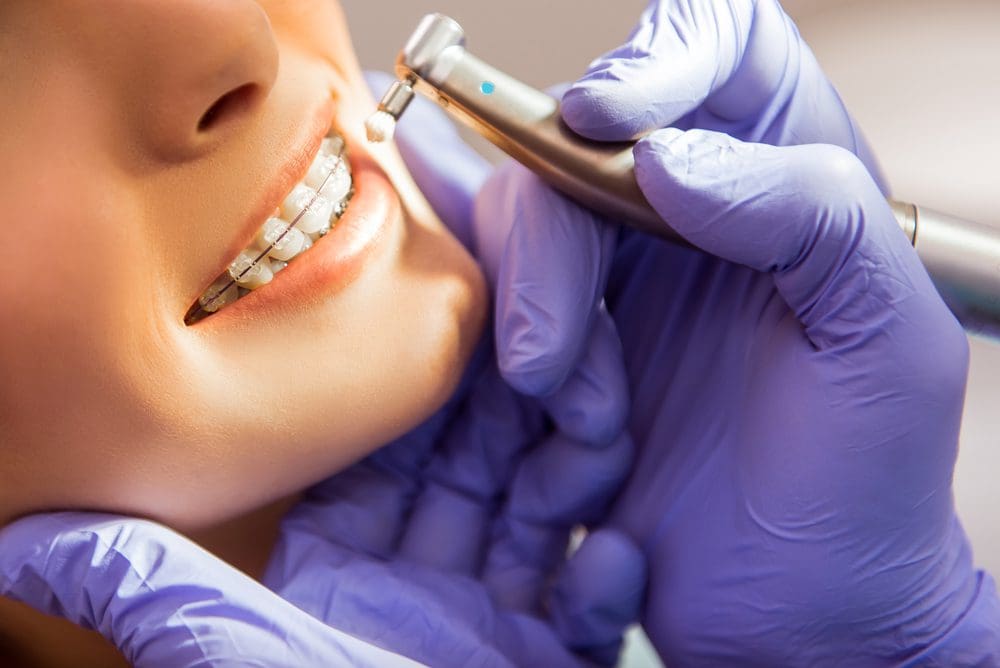The Benefits of Picking a Cumming Orthodontist for Your Braces and Aligners
Wiki Article
Comprehensive Overview to Orthodontics Procedures for Correcting Oral Misalignments
Comprehending the ins and outs of each procedure, including their systems, advantages, and prospective disadvantages, is crucial in making educated choices concerning one's orthodontic treatment. As we navigate via the extensive guide to orthodontic procedures for correcting dental misalignments, the intricate details of each method will certainly unravel, losing light on the path toward a useful and unified dental alignment.Orthodontic Procedures Overview

In addition to clear aligners and traditional dental braces, orthodontists might additionally advise various other treatments like headwear, palatal expanders, or retainers to deal with particular alignment issues (orthodontics). These procedures are tailored to each person's one-of-a-kind requirements and might entail a combination of treatments to achieve the desired outcomes. Routine adjustments and surveillance are critical components of orthodontic treatment to guarantee progression gets on track and to make any type of necessary alterations along the road. By undergoing orthodontic treatments, clients can not only accomplish a straighter smile but additionally enhance their overall dental health and feature.
Typical Braces: Exactly How They Function
When thinking about orthodontic therapies for oral imbalances, typical dental braces attract attention as a reliable method for correcting teeth placing. Conventional dental braces are composed of brackets, wires, and bands that work together to apply continuous pressure on the teeth, gradually relocating them right into the wanted placement. The braces are connected to the teeth making use of an unique adhesive, and the cords are threaded with the brackets. By changing the tension of the cords, orthodontists can regulate the instructions and pressure put on each tooth, assisting them into proper alignment with time.
As pressure is used to the teeth with the dental braces, the bone surrounding the teeth is improved to sustain the new tooth placements. Clients will certainly need routine adjustments at the orthodontist's office to make certain the braces proceed to use the appropriate stress for effective teeth motion.
Unseen Aligners: Advantages And Disadvantages
Invisible aligners provide a convenient and very discreet choice to conventional dental braces for dealing with dental misalignments. These clear, tailor-made trays are virtually unnoticeable when used, making them an appealing option for individuals looking for an extra cosmetically pleasing orthodontic treatment. One of the main benefits of unseen aligners is their removability, enabling simpler upkeep of dental health contrasted to typical dental braces. Patients can remove the aligners prior to eating or brushing their teeth, minimizing the threat of food obtaining embeded the device and streamlining the cleansing procedure.
Surgical Orthodontic Options
Surgical interventions in orthodontics existing sensible choices for attending to complex dental imbalances that may not be successfully resolved with standard orthodontic treatments. While conventional dental braces and undetectable aligners can correct numerous orthodontic problems, particular cases need medical treatment to attain optimum results. Surgical orthodontic options are normally recommended for severe malocclusions, considerable jaw inconsistencies, and cases where the underlying bone framework needs alteration to accomplish proper positioning.One typical surgical orthodontic procedure is orthognathic surgery, which entails rearranging the jaws to remedy practical concerns such as problem chewing or talking. This surgical procedure is commonly carried out in cooperation with an orthodontist that assists align the teeth prior to and after the procedure. Surgical orthodontics may additionally entail procedures to expose influenced teeth, remove excess gum tissue, or improve the jawbone to produce a more harmonious face account.
Prior to considering medical orthodontic options, patients go through a detailed examination to determine the need and possible advantages of such interventions. aligners. While surgical procedure may seem overwhelming, it can considerably boost both the function and aesthetics of the smile in cases where standard orthodontic treatments fail
Retainers and Post-Treatment Treatment

Failing to conform with post-treatment treatment directions can result in relapse, where the teeth slowly move back in the direction of their original positions. Consistent retainer wear, good dental health, and normal dental exams are essential for preserving the results accomplished via orthodontic surgery and making sure the long-term security of the dealt with oral alignment.
Final Thought
In conclusion, orthodontic procedures supply numerous options for correcting oral imbalances. Surgical orthodontic choices are offered for more extreme misalignments. In general, orthodontic procedures can properly enhance oral wellness and aesthetic look.As we browse with the comprehensive guide to orthodontic treatments for remedying oral misalignments, the intricate information of each approach will unfold, losing light on the course towards a practical and harmonious dental positioning. - orthodontist
One of the most typical orthodontic therapies is the usage of dental braces, which are cumming braces composed of steel brackets and cords that apply gentle stress to gradually change teeth right into the desired setting.When thinking about orthodontic treatments for dental misalignments, standard braces stand out as a tried and true method for correcting teeth positioning. Furthermore, unnoticeable aligners may not be suitable for complicated orthodontic issues that need even more substantial teeth activity, as they are generally advised for moderate to modest instances. Retainers are personalized orthodontic devices designed to hold teeth in their fixed settings after the conclusion of orthodontic therapy.
Report this wiki page